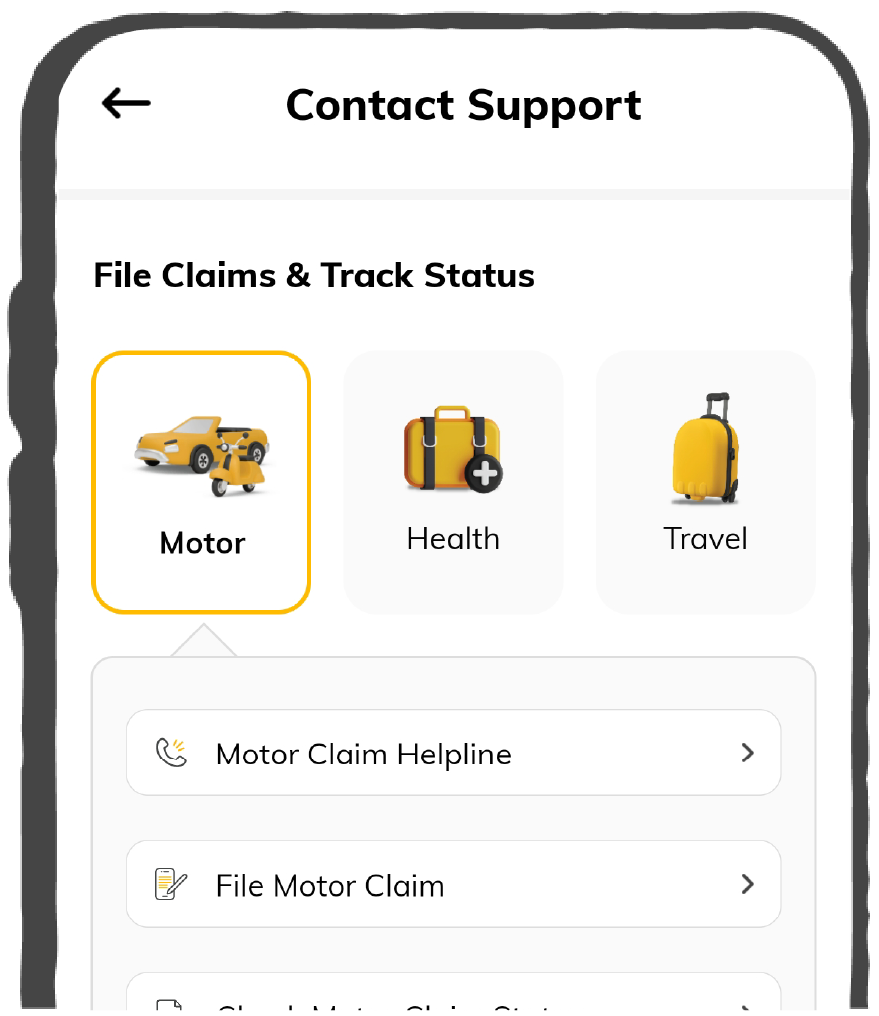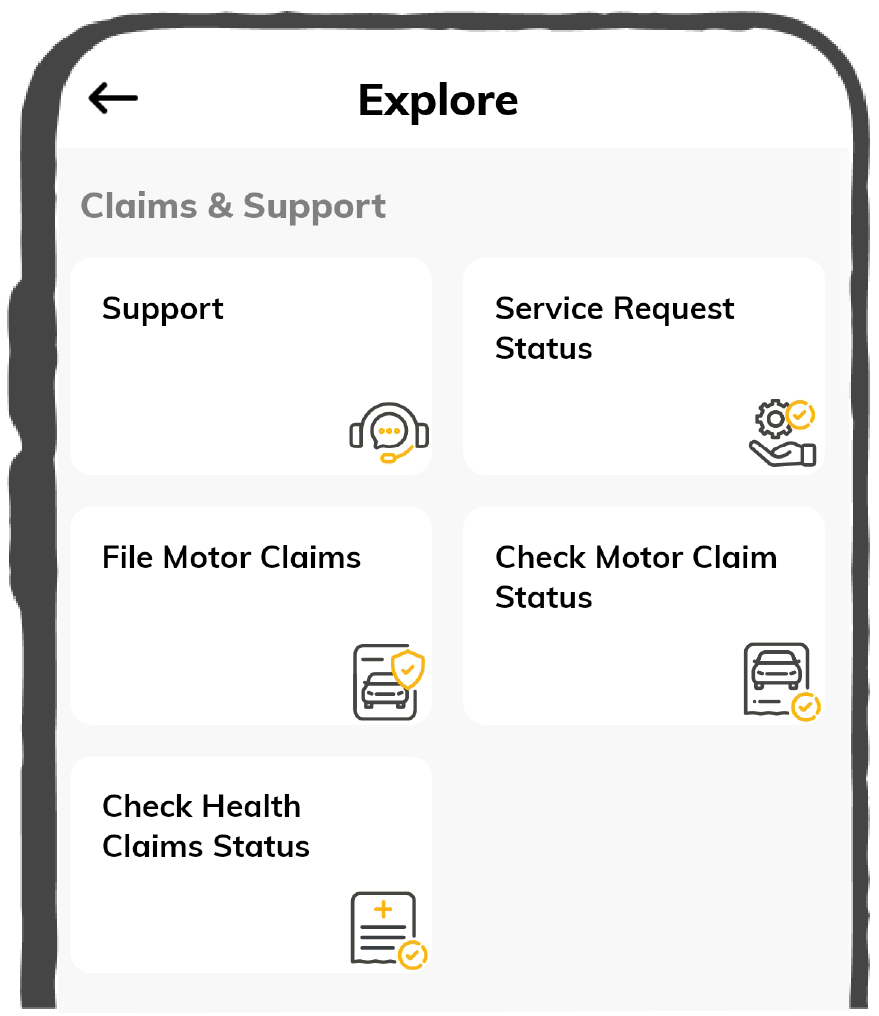Hypothecation in Car Insurance
9000+
Cashless Garages
2900 Crore+
Paid-in Claims
1.2 Cr+
Policies Sold
I agree to the Terms & Conditions
Buy Online for Huge Savings

Car insurance Online, Up to 90% Discount
It's a Brand New Car
9000+
Cashless Garages
2900 Crore+
Paid-in Claims
1.2 Cr+
Policies Sold
Meaning of Hypothecation in Car Insurance & Definition Explained

Do you know that buying a car on credit means that you do not actually own the vehicle until this debt is repaid?
Even though you get to use the car/bike and repair it if necessary, its ownership is restricted to your car loan providing institution. This is known as hypothecation.
Although it may sound complicated at first, assessing the meaning and importance of hypothecation should allow you to remove this tag when the time comes.
After the car loan is fully repaid, hypothecation removal will allow you to claim the vehicle as your own property.
What is Hypothecation in Car Insurance Policies?
Every car operating in India should possess an insurance policy covering it, as per the Motor Vehicle Act of 1988.
When you opt for such an insurance plan on your hypothecated car, the policy also comes with a note stating that your vehicle is pledged to the particular lending institution.
After repayment is complete, you can remove the hypothecation label from your RC and your car’s insurance plan.
Keep in mind that even though car insurance hypothecation identifies your lender as the original owner of the vehicle, you can still claim financial support from the insurance provider in case of accidental damage.
What happens when you change insurance providers?
You may be wondering what would happen if you decided to change insurance companies while the vehicle is still hypothecated to a bank.
Well, in such a case, your new insurer will check the RC for the car and assess whether it is still under hypothecation. If so, your new provider will follow the same process as your older insurance company did.
How Does Hypothecation Work in Car Insurance?
At first glance, hypothecation meaning can seem complex and convoluted. However, think of it in this way. You are buying a brand new vehicle with a loan from your chosen bank or financial institution. In such a case, your car becomes the collateral or security for the credit.
If you fail to repay the dues, the financial lender can repossess the vehicle in question and sell it off. This enables a bank to avoid losses even when a borrower defaults.
Hypothecation ensures that the car or bike ownership remains with your lender until you complete repayment.
When you register your car after purchase at the local RTO, the office will ensure that it is registered in your name. Even the registration certificate or RC will bear your name as the car’s owner.
However, its RC will have a special note stating that the vehicle is hypothecated to your lender.
Documents Required for Vehicle Hypothecation
If you intend to register a vehicle with the RTO, which is currently hypothecated to a particular bank or financial institution, you would need to submit the following documents:
- Filled up Form 34 - This is the form for hypothecation application, which you must fill up with relevant details.
- Car Insurance Documents - You must also present the valid insurance documents for the car when registering for hypothecation.
- Copy of PAN Card - Applicants must submit a self-attested photocopy of their PAN card.
- PUC Certificate
- Car Owner’s Residential Proof - This can comprise photocopies of voter ID card, Aadhaar card, Driving license, Passport, utility bills and much more.
- Fee Payment Receipt - Individuals need to pay a fee to the RTO for its endorsement of the hypothecation. You would need to provide this receipt as well.
- Original RC
What is the Process of Removal of Car Hypothecation
Hypothecation removal is possible only when the car loan is completely repaid. Therefore, you can initiate this removal process after paying the final EMI for your vehicle loan.
However, due to the various formalities involved in the bank and the RTO, you may need to wait for official removal of this status.
1. Removal of Hypothecation from RTO
The procedure starts off with you paying off the car loan. You would need to collect a No Objection Certificate from your lending institution.
You would then need to submit the NOC, along with your original RC and other supporting documents, to ensure that the RTO begins fresh proceedings.
These are some of the steps to follow:
- A verification officer must check and verify each of the documents before submission at the RTO.
- Next, ensure that all the relevant details are fed into the computer for seamless integration into the RTO’s computer-based system. The following steps involve submitting the documents to an officer, who will verify the details with that of the information present on the RTO’s servers.
- Proceed to the payment counter and pay a charge of Rs.100. After payment is complete, return to the previous counter and submit your documents, along with the payment receipt.
- In the next few days, the RTO will verify all your details. If all the pieces of information match, your hypothecation status would be removed.
A few days later, you will acquire a new RC, which would remove your hypothecation status from your registration certificate.
2. Removal of Hypothecation from Car Insurance Policy
Removing the hypothecation status from your vehicle’s insurance policy is simple. All you need to do is submit the NOC from your car loan provider after dues are serviced. When this procedure is complete, your insurer will update the pertinent details in your policy papers.
Keep in mind that RTO cancellation of hypothecation status would require you to visit the local Regional Transport Office physically. In case of removal of hypothecation labels from your policy, you may be able to complete the process online. However, this varies from one company to another.
Checking the Hypothecation Status during Removal/Cancellation
Each state in India follows a different process for cancellation or removal of hypothecation. The best way is to visit your respective RTO to know more about this status checking process for termination of your vehicle’s hypothecation.
Alternatively, you can visit the Parivahan web portal to know the status of your application as well. However, you would need to enter your application number or registration number to ensure this status check.
Why is it Important to Remove Hypothecation on Your Car?
Many car owners may feel that hypothecation removal involves substantial hassle, without considerable payout. However, this is not true.
Here are some instances, where failure to remove hypothecation status on your vehicle can cost you dearly:
- Selling the Car Would be Impossible - When it comes to transferring ownership of your car to a different individual, hypothecation status can complicate matters. Consider that your car loan repayment is complete. However, you fail to remove this status from your car’s insurance and RC. In such a case, technically, the car still belongs to the financial lender. Thus, this technicality will prevent you from selling the car in question. Removing the hypothecation as soon as the debt is cleared will help you avoid such complications later.
- Ownership Complexities - Even when you do not plan to sell a vehicle, avoiding the removal of hypothecation on time would lead to complications regarding the car’s ownership. As stated previously, as long as this hypothecation tag is attached to your car’s RC, it is still technically the bank’s property and not yours.
- Claiming Total Loss Coverage - Your car’s insurance plan is equipped with provisions to provide a substantial amount as claim if the vehicle in question is stolen or totalled. During repayment tenure of car loan, such incidents would mean that the lender would acquire the claim amount and not the policyholder. However, after repayment is complete, the policyholder should receive such financial assistance instead of banks. Due to the failure to remove hypothecation, you can face issues while filing such a claim.
- Insurance Policy Renewal Can Become Complicated - If your hypothecation status remains in place, renewing your vehicle insurance policy can also be problematic. In some cases, insurance companies may scrutinise such renewal applications more extensively than in typical cases.
Opt for a Fresh RC Smart Card Post Hypothecation Removal
Now that you know everything about the hypothecation process keep in mind that while acquiring a fresh RC after paying your car loan, you select a smart RC. You can apply for this smart card by paying a minimal fee. Once you acquire this type of RC, you can safely say that the concerned vehicle rightly belongs to you.
















